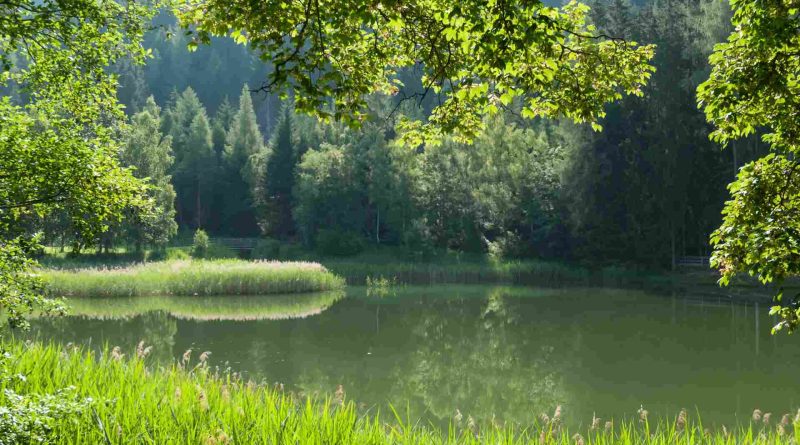Transforming England’s Landscape: Ambitious Nature Recovery Projects Take Root
Embarking on a mission to transform 99,000 hectares of English land into sprawling ‘nature recovery’ endeavors.
In an effort funded by Defra and Natural England, five initiatives are set to combat wildlife depletion and enhance nature accessibility.
Across the varied terrains of England, spanning from urban outskirts to marshlands, a concerted effort will be directed towards nurturing wildlife in five ambitious “nature recovery” ventures, as announced by the government.
The quintet of landscape-scale undertakings in the West Midlands, Cambridgeshire, the Peak District, Norfolk, and Somerset aspire to address the crises of dwindling wildlife and climate change while also facilitating public engagement with the natural world.
Commencing with an initial endowment of £2.4m from the Department for Environment, Food, and Rural Affairs and Natural England, these projects aim to craft new ecosystems, steward lands for biodiversity and carbon sequestration, and expand pedestrian pathways, fostering connectivity with communities. Further financial backing is anticipated from additional sources and collaborators.
Envisioned as comprehensive nature rehabilitation endeavors encompassing existing reserves and broader landscapes, these schemes aim to blanket 99,200 hectares of land over time—a space equivalent to the collective expanse of all 219 present national nature reserves.
Venturing into the heart of these projects entails a spectrum of activities, ranging from repurposing farmland into chalky grasslands to reviving ancient “dewponds” and sustainably managing wetlands and other ecological terrains.
Moreover, initiatives will develop strategies for engaging urban and underprivileged communities, enhancing their access to nature through the establishment of green spaces and the improvement of pathways and trails.
Expressing optimism, Environment Minister Rebecca Pow remarked, “These five endeavors across England exemplify captivating, large-scale restoration efforts crucially needed to catalyze a paradigm shift in nature’s resurgence within our nation. They will significantly contribute to our goal of halting the decline in species abundance by 2030 and our commitment to safeguarding 30% of our land by the same year, ensuring a legacy of environmental enhancement.”
Echoing this sentiment, Natural England Chair Tony Juniper affirmed, “Nature’s convalescence can only be realized through concerted, large-scale action fostered by partnerships. These five landmark initiatives seek to revive species and habitats through collaborative efforts among a diverse array of land custodians and organizations, yielding dividends for biodiversity, local economies, climate adaptation, and public well-being.”
The five projects are as follows:
Purple Horizons: Spanning up to 10,000 hectares on the outskirts of the West Midlands conurbation, this endeavor centers on reviving and interlinking fragmented heathlands to form a tapestry of habitats comprising heathlands, wetlands, woodlands, and grasslands. It aims to integrate existing protected areas, collaborate with local landowners to realize habitat creation and carbon sequestration, and devise strategies for engaging communities in Walsall’s disadvantaged areas, prioritizing the establishment of green spaces for maximum health benefits.
Somerset Wetlands: Encompassing as much as 60,000 hectares of the Somerset Levels and Moors, this initiative harbors the long-term ambition of reinstating ecological processes across moors, wetlands, and coastal zones. Sustainable wetland management will sustain peatland carbon stores, invigorate green tourism, mitigate pollution, and bolster resilience against floods and droughts. In its inaugural year, partners will undertake 11 projects in collaboration with landowners, focusing on habitat restoration and carbon sequestration.
Cambridge Nature Network: This project aims to enrich wildlife habitats within and around the city of Cambridge, spanning 9,200 hectares, by augmenting existing nature sites, enhancing connectivity, and enlarging habitats. Initiatives include converting farmland into chalk grasslands, establishing new meadows and woodlands, and conducting tree planting and meadow rehabilitation within the urban sphere.
Wye Valley, Peak District: Encompassing 10,000 hectares, including nearly 1,400 hectares of existing protected areas and priority habitats, this project’s initial focus lies on rejuvenating dewponds to support amphibians and insects. Baseline surveys will evaluate habitats and potential avenues for private investment in nature enhancement, guided by regulations mandating developers to deliver biodiversity “net gains.” Concurrently, nature recovery kits will be distributed to 500 residents, fostering a deeper connection with the natural world.
Wendling Beck, Norfolk: Situated near Dereham, this project seeks to overhaul farmland and its adjoining river valley across 10,000 hectares, promoting habitat restoration and sustainable agricultural practices. A collaborative effort involving local farmers, Norfolk Wildlife Trust, and Norfolk County Council, among others, aims to create and enhance grasslands, heathlands, woodlands, and wetlands to bolster wildlife diversity, ranging from turtle doves to green-winged orchids. Piloting a scheme for biodiversity net gain credits, the project also aims to facilitate permissive access and integrate with the Norfolk Trails Network.

